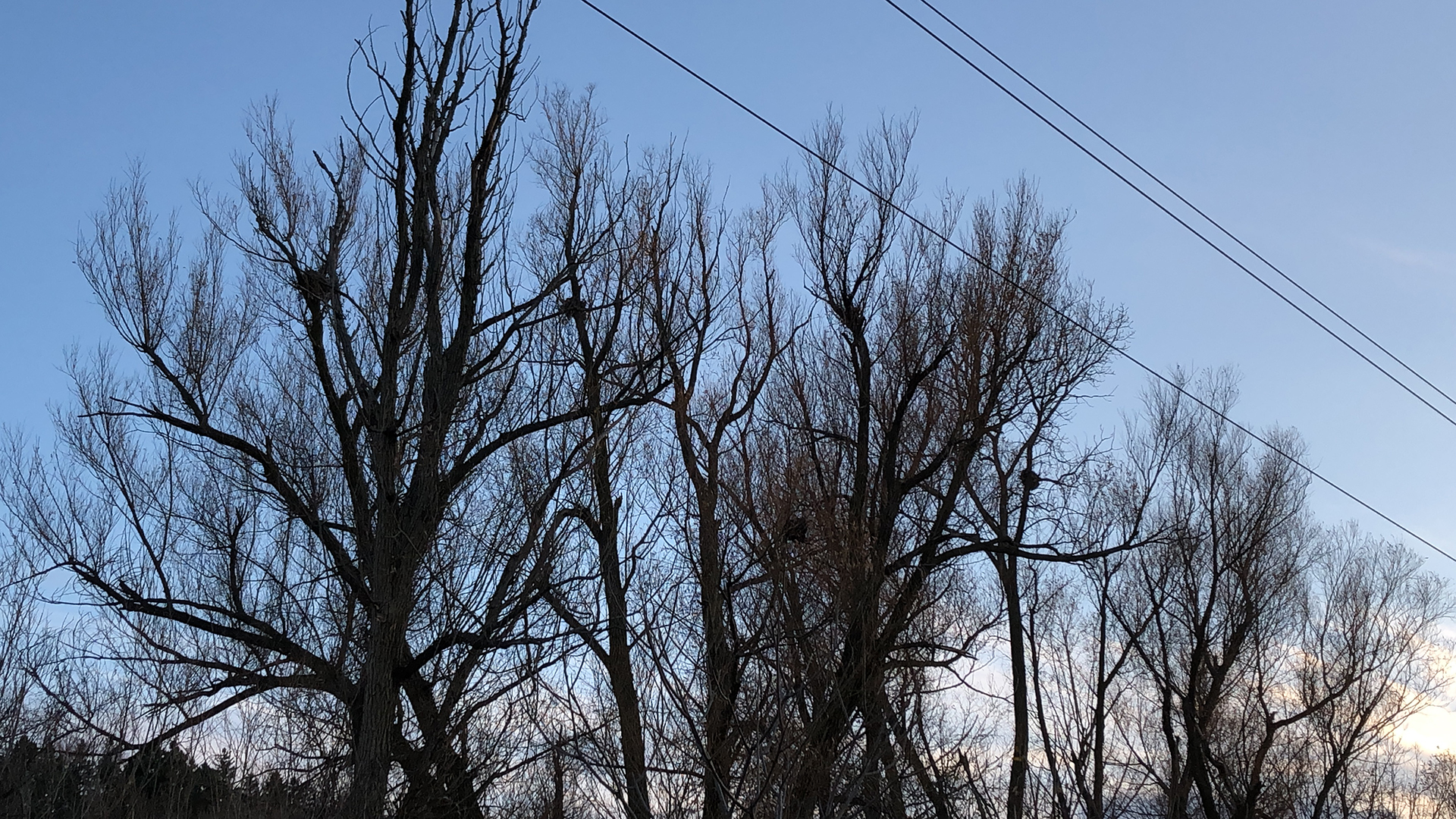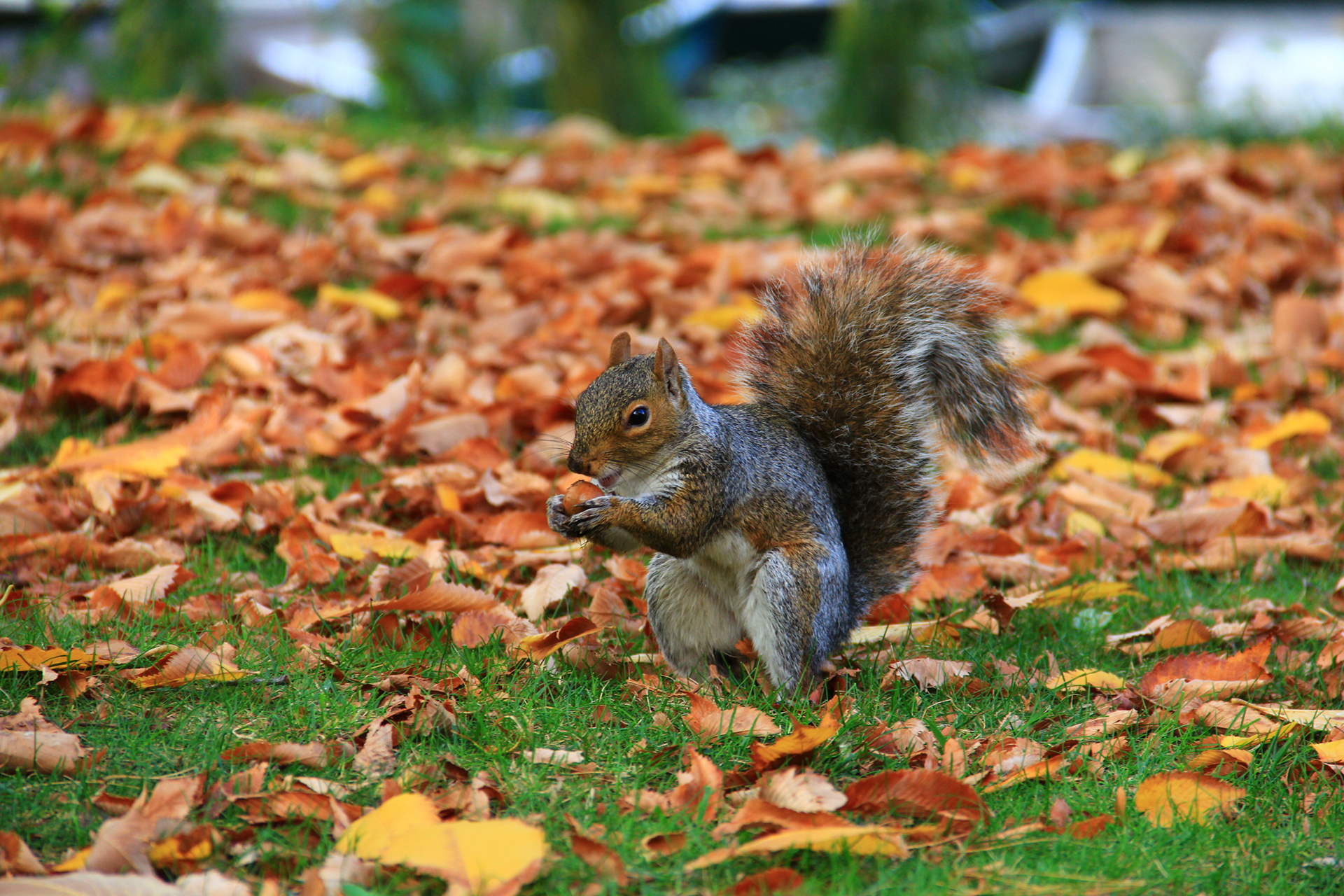| Membership | Price (+HST) |
|---|---|
| Single | $85/year |
| Single Plus | $120/year |
| Family | $130/year |
| Family Plus | $175/year |
| Contributing | $300/year |
| Supporting | $600/year |
| Sustaining | $1,000/year |
| Benefactor's Circle | $2,500/year |
| Director's Circle | $5,000/year |
| President's Circle | $10,000/year |
Keeping Cozy in Winter: Squirrel Dreys
By Danielle Barrett, Education Resource Interpreter/Interprète de la nature, Royal Botanical Gardens.
It is December and you go for a walk in your neighbourhood and notice a beautiful tree with only a few leaves hanging onto the end of its branches. Way up in the tree you see what looks like a large nest composed of a pile of leaves nestled between two branches. That the large pile of leaves gathered in trees is not a bird’s nest, but a squirrel’s nest known as a drey.
Dreys are usually spherical and built in a stable location like forks of a tall tree. Dreys become more visible in late fall when trees have dropped their leaves. However, many female squirrels begin construction of their drey in summer as a nesting site. Breeding season typically runs from late December to late August with an average litter of two to four young.

Locally, we have three species of tree squirrels which include the Eastern Grey Squirrel, Red Squirrel, and Northern Flying Squirrel. Tree squirrels do not hibernate in winter, but instead will take shelter in their nest during freezing temperatures and damp conditions. They all like to make in tree cavities but those can be hard to come by. Eastern Grey Squirrels build most of the dreys we see in our area. According to BBC’s Winterwatch series (2015), the interior of a well-insulated drey can be 20–30 ºC warmer than the air temperature outside. Not only do dreys help squirrels stay warm but they help protect them against predators.
Most dreys are constructed by weaving branches together to create a sphere and covered in leaves to add protection from water. An entrance hole to the drey faces towards the tree trunk. As winter approaches, finer natural materials are used as insulation to help protect it from the cold. A variety of materials are used depending on the species of squirrel.
Eastern Grey Squirrel (Sciurus carolinensis)
Eastern Grey Squirrels prefer using materials such as bark, and twigs to create the exterior. The interior of the drey is often lined with moss, thistle seeds, dried grass, and feathers. Dreys are mostly a spherical shape measuring 30–60 cm in diameter (ICSRS, 2020). Eastern Grey Squirrels may occasionally share a nest with other Eastern Gray Squirrels to help stay warm.

Red Squirrel (Tamiasciurus hudsonicus)
Red Squirrels construct the exterior of their drey with coarse layers of bark and the interior with finely shredded bark of birch or white cedar, grass, moss, and even feathers. On average their nest will measure 20–50 cm in diameters (Saunders, 1988). They prefer to construct their nest in coniferous trees such as tall spruce and pine trees but have been seen nesting occasionally in walnut trees.

Northern Flying Squirrel (Glaucomys sabrinus)
Northern Flying Squirrels construct their nests using numerous shredded yellow birch bark, lichens, mosses, and even fungal rhizomorphs, as well as leaves and twigs. In winter, they will often build their nests in tree cavities created by woodpeckers (Weigl, 1974). Dreys are built in conifers during summer months for young rearing. Northern Flying Squirrels are known to share nests during the winter months to remain warm and control body temperature. There can be as many as ten Northern Flying Squirrels sharing one nest.


Next time you go for a walk, look way up at the trees and you may spot a squirrel drey. How many can you count in your neighbourhood? Happy exploring.
- ICSRS. Interactive Centre for Scientific Research about Squirrels. Basic Information about Squirrels. 30 November 2020. http://i-csrs.com/basic-information-about-squirrels
- Saunders, D. A. 1988. Adirondack Mammals. State University of New York, College of Environmental Science and Forestry. 216pp.
- Weigl, P. D. 1974. Study of the northern flying squirrel, Glaucomys sabrinus, by temperature telemetry. American Midland Naturalist 92:482-486.
More from the RBG Blog
Check out RBG’s blog for announcements, articles, and more from Canada’s largest botanical garden.
Want to be sure you hear first? Sign up for our weekly e-newsletter to hear about upcoming events, weekend activities, articles, and more!












